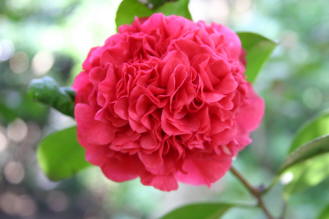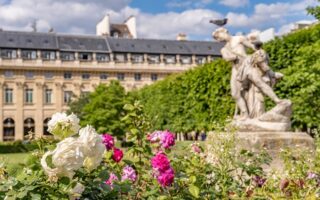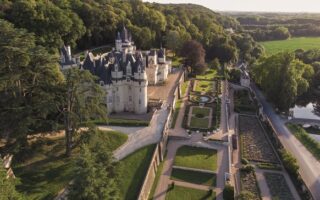Gardens of the Languedoc, South of France

The Parc des Camellias de la Prairie
The floral gardens of “les Camellias de la Prairie” opened in 2005 and promise you a treat for your eyes in the months of February and March. Already during my visit in December the buds were sprouting in their thousands, branches weighed down and leaves a healthy green thanks to the ideal conditions in which the Camellias thrive.
Albeit compact in size, the “Parc des Camellias” will take an hour and half to walk around with your personal guide, the friendly gardener, who will pass on many a tale about the history of the garden and tips about each plant. Created in 1930 by Jean Ignal, the garden is actually a private garden set around the family home, and therefore has an delightfully intimate atmosphere. As you follow a twisting path between bamboo and camellia, different varieties are constantly unveiled, some towering high above you while others barely reaching three feet high.
Jean Ignal was working as a market gardener and horticulturist when he planted his first camellia, which happened to be a gift from a tea and coffee distributor. When the plant thrived he added a few more specimens. It wasn’t until the fifties that he realised that the conditions in his garden were so perfect for camellias.
The Prairie is a flat area that had been regularly flooded by the nearby river Gardon over the centuries. This means that the soil was very acidic due to the deposits laid down from the erosion of the gorges of the Gardon (which you can also explore by foot or canoe). The sunny and humid climate is another factor for his success. Added to this, take four metres of humous laid down by ancient plantations of chestnut trees and their leaves, and you have camellia heaven. The plants need no fertilisation and the park is totally organic. The trees seed themselves liberally and all they need is a controlled automatic watering system during the heat of the summer. Having said this, the damp conditions of the soil and shade of larger trees ensure that temperatures in the garden never reach above 30 °C in the summer, and provide you with a perfect retreat from the heat. There are well-placed benches on which to sit and take in the beauty of the abundant flowers and greenery.
As my visit took place during the autumn (December) I was able to smell the earthy vanilla fragrance of Camelia japonica “Shawa-No-Sakae”, a small cream-coloured flower. Also flowering at this time of year were Ishtar, a new variety, Maiden’s Blush; Versicolor, Evangeline, New Dawn, Nakai and Sparkling Burgundy, which particularly struck me with its deep red colour and double flower. If you can, visit in February or March when the majority of the spring flowering varieties will be flowering.
Camellias became popular in France soon after Queen Victoria imported many for her gardens. The queens and princesses of France, Spain, Portugal and Northern Italy were fascinated by this exotic Asian plant and established fantastic parks to show off their collections and hybrids. The Empress Josephine de Beauharnais is credited largely with giving them a fashion status. Much later, Coco Chanel used the white buttonhole camellia as her motif, in her designs and as accessories for both male and female models.
The Parc des Camellias also contains a variety of acid-loving plants such as hydrangea, huge magnolias and flowering cherries, azaleas and Japanese maples, giving you flowers all year round. Guided visits can also be given in English and a variety of gardening classes are available.
For further information, visit the Parc’s website
Share to: Facebook Twitter LinkedIn Email
Leave a reply
Your email address will not be published. Required fields are marked *



